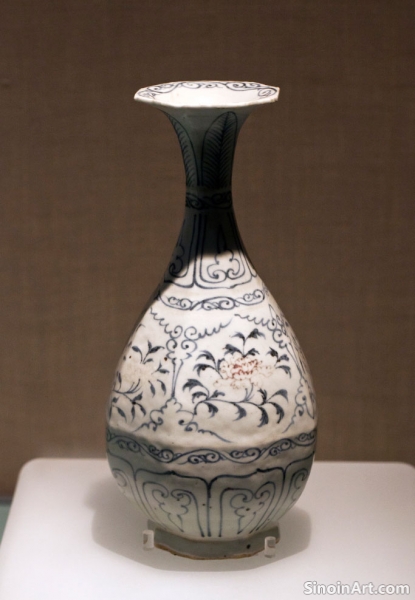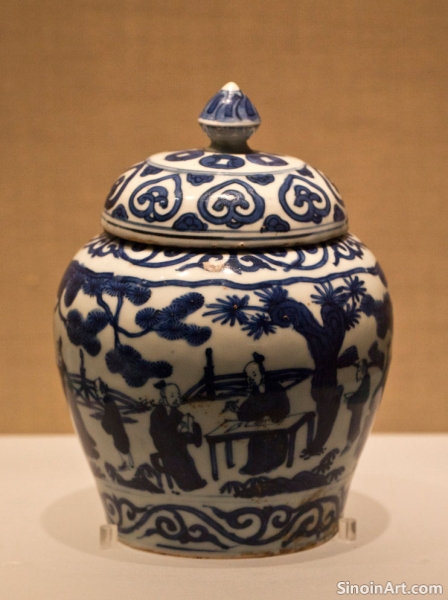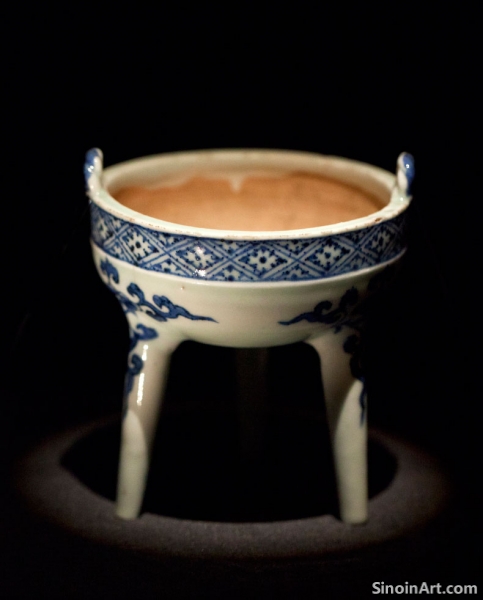The Influence of the Mongol Empire on Yuan Ceramics
|
The Yuan Dynasty was established by the Mongol Empire, and this period of Mongol rule had a subtle yet significant impact on the development of Chinese ceramics, particularly in terms of its trade networks and the cultural exchange that occurred during this period, and the influence of the Mongol Empire is visible in various aspects of the production and design of Yuan pottery.  The Mongol Empire's vast trade network facilitated the exchange of materials, such as cobalt for blue and white porcelain, and cultural ideas, which influenced the designs and decorations of Yuan ceramics. The access to new materials and ideas from around the world had a direct impact on the styles and forms that were popular during this period.  The Mongol rulers' appreciation for robust, practical designs may have contributed to the larger scale and more utilitarian forms seen in some Yuan ceramics. The practicality of use was clearly valued, which meant that many pieces were both beautiful and functional.  The introduction of new motifs and decorative elements, such as certain types of floral patterns and animal representations, may also reflect the influence of Mongol aesthetics. The unique blending of Mongol and Chinese aesthetics contributed to the development of a new and unique approach to Chinese pottery production. The impact of the Mongol Empire on Yuan ceramics demonstrates the interconnectedness of political power, trade, and artistic development during this period in Chinese history. |
Tag : Mongol influence, Yuan Dynasty art, Chinese ceramics, cobalt trade, cultural exchange
Related information
- The Symbolic Use of Animals on Yuan Dynasty Porcelain
- Exploring the Regional Variations in Yuan Dynasty Porcelain Production
- The Impact of Yuan Dynasty Porcelain on European Ceramics and Decorative Arts
- The Impact of Yuan Dynasty Ceramics on Later Periods
- The Challenges of Authenticating Yuan Dynasty Porcelain: A Collector's Guide
This article explores the symbolic use of animals in the decoration of Yuan Dynasty porcelain, focusing on the meanings of dragons, phoenixes, and other creatures, providing insights into the cultural beliefs of the era.
This article delves into the regional variations in Yuan Dynasty porcelain production beyond Jingdezhen, exploring the characteristics of celadon wares from Fujian and Zhejiang, and the distinct styles of white and blue and white wares from northern kilns.
This article examines the transformative impact of Yuan Dynasty porcelain on European ceramics and decorative arts, detailing how it inspired new techniques, influenced the development of blue and white traditions (like Delftware) and reshaped European artistic preferences.
Yuan Dynasty ceramics profoundly impacted later periods, particularly through the innovation and standardization of blue and white porcelain, the mastery of cobalt underglaze techniques, and the transmission of key decorative motifs.
This article provides a guide for collectors on the challenges of authenticating Yuan Dynasty porcelain. It discusses key factors such as form, decoration, glaze, and the importance of provenance in ensuring authenticity.